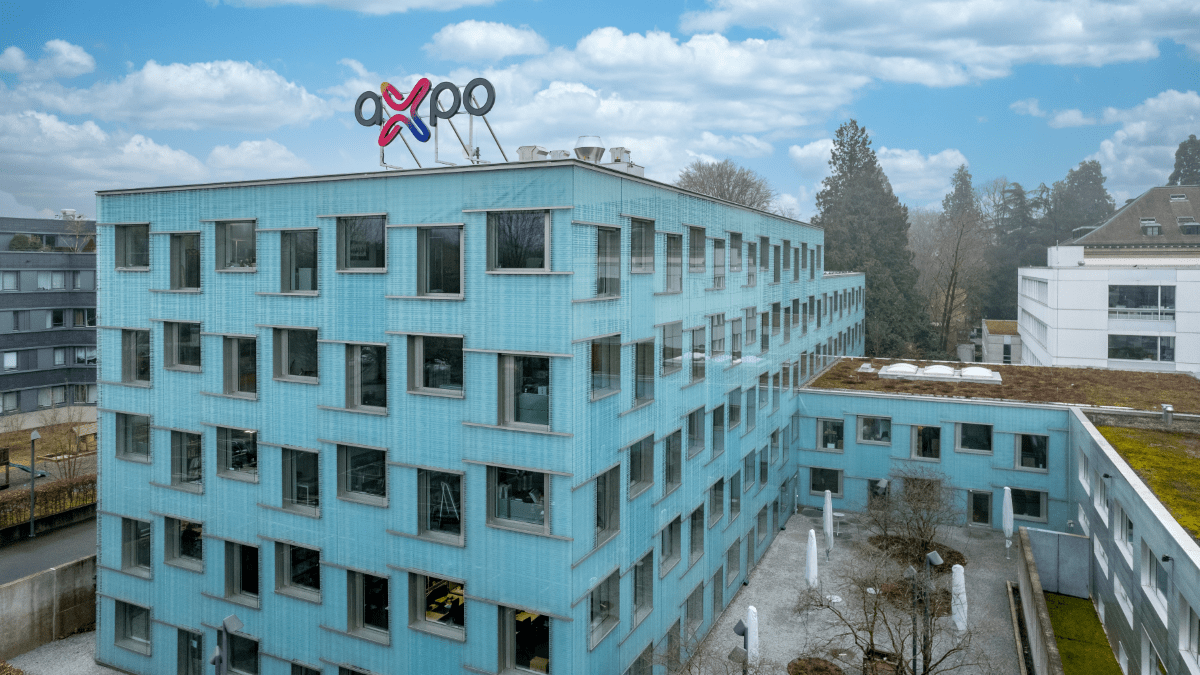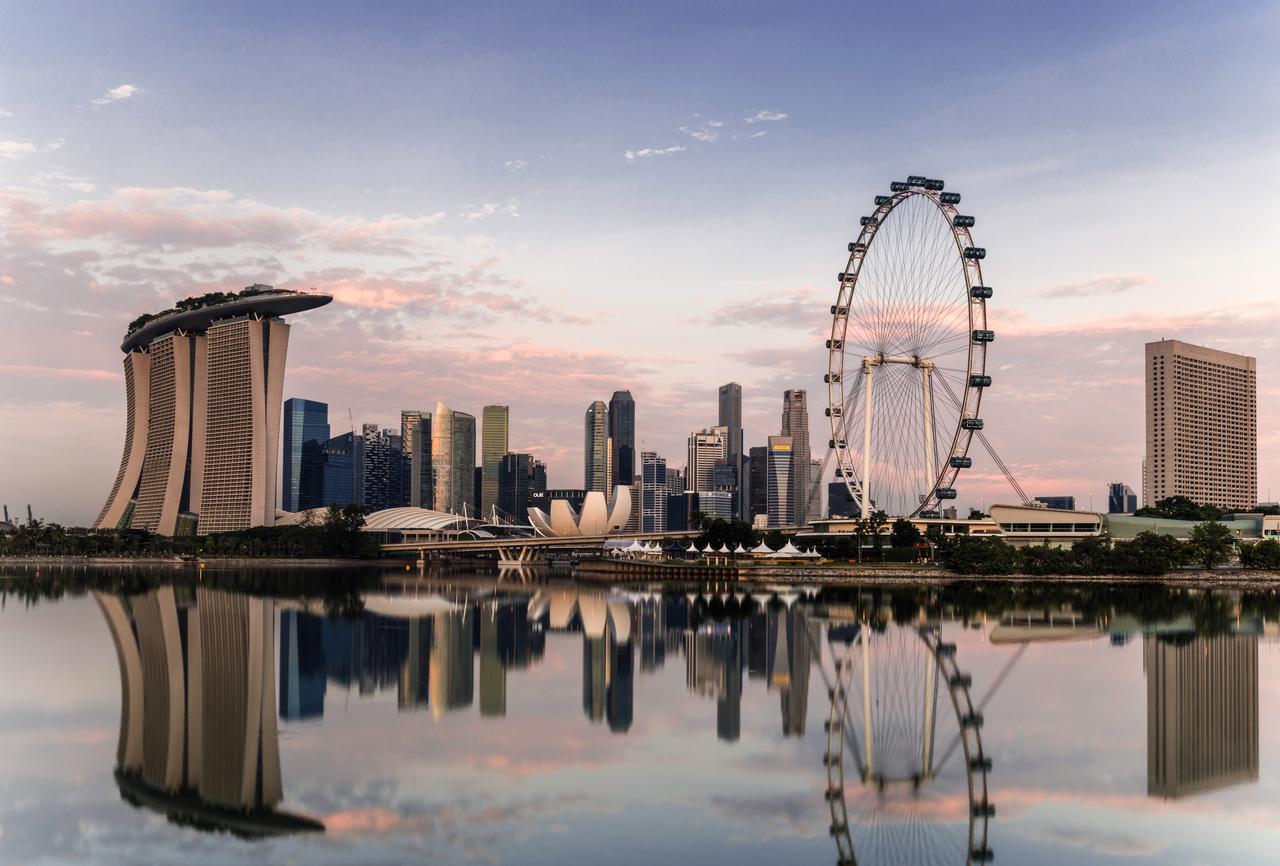16.07.2025 | Interview with Axpo Heads Hydrogen and Biogas International Guy Bühler and Véronique Abrate
‘We need green fuel for successful decarbonisation’
Green hydrogen, derivatives such as ammonia and methanol, and biogas are key terms when it comes to climate-friendly energy and green fuels. Axpo has been involved in projects in all these areas both at home and abroad for several years. In summer 2025, for example, Axpo and its partners laid the foundation stone for the ‘Arv'Hy’ mobility project in the Arve Valley in France. In Switzerland, Axpo is taking its first steps in the field of green fuels with its plants in Domat/Ems and Bürglen and is already producing green hydrogen.
The ‘Arve Mobilité Hydrogène’ project demonstrates that green fuels have a future. It marks a milestone for the energy transition in the French Vallée de l'Arve, a region particularly affected by air pollution. Axpo is working with partners such as Atawey, Crédit Agricole des Savoie and Jean Lain Mobilités to build a hydrogen filling station near the A40 regional motorway. The station is scheduled to go into operation by the end of 2025 and will supply renewable hydrogen for various types of vehicles, from trucks and buses to light vehicles. The aim is to decarbonise mobility in a challenging, mountainous area with high traffic volumes in a sustainable manner.
Green hydrogen for shipping
Axpo's focus is on decarbonising industry, i.e. switching from grey hydrogen to green hydrogen. However, the ‘H2Uri’ project shows that mobility projects also have potential in Switzerland. Axpo is the majority shareholder in H2Uri, which is building a hydrogen production plant in Bürglen in central Switzerland. The hydrogen produced locally will be used to power the first hydrogen passenger vessel operated by Vierwaldstättersee-Schifffahrtsgesellschaft (SGV) AG on nearby Lake Lucerne. The ground-breaking ceremony for the new H2 plant took place in December 2024. At the same time, Axpo is developing expertise in the field of various power-to-X plants. For example, the company holds a 45% stake in Swiss Green Gas International (SGGI). Founded in 2020, the joint venture plans and implements power-to-X plants in Northern Europe. The plants generate hydrogen and synthetic methane (green gas) from renewable electricity. The aim is to promote the urgently needed to be accelerated phase-out of fossil fuels.
Guy Bühler, Head of the Green Gases Division at Axpo, and Véronique Abrate, Head of Biogas International, explain the most important developments in the field of green gases. In this interview, they provide insights into new projects, market hurdles and local potential for the green fuels of the future, among other things.
Guy Bühler, some people say that there are too few buyers and that it is not worth investing in hydrogen projects. What is your response to that?
With green hydrogen, we have what is known as the chicken-and-egg problem. We need consumers, but we also need producers. Demand is currently lagging behind supply, but that does not mean that the projects will not be profitable. Axpo is doing pioneering work in this area, for example with its plant in Domat/Ems, where we have already sold small quantities of hydrogen. Axpo's belief in the ramp-up of hydrogen is also demonstrated by our projects in Switzerland and abroad, such as the plant in Graubünden mentioned above and the plant in Bürglen, which will supply a ship on Lake Lucerne.
Speaking of projects abroad, where do we currently stand with the various projects?
They are all progressing, albeit more slowly than expected. I would like to mention in particular the mobility project in Vallée de l'Arve, France, which was already mentioned, where construction work is progressing. Iceland is also an exciting field. Through our partnership with SGGI, we are very close to the action when it comes to the production of renewable synthetic fuels and, of course, our offensive strategy in the biogas sector, for example in Poland, Spain and Portugal.
That's where you come in, Véronique. What exactly do we do at Axpo in the biogas sector? What is the goal?
Natural gas plays a key role in the energy system; for electricity production in some countries, for heating and industrial processes in all of them.
The gas we use in Europe is mainly fossil and imported. It is therefore not climate friendly and creates geopolitical dependencies that we all realized after Russia invaded Ukraine. Biogas - all well as green hydrogen - are alternatives to natural gas for the applications that cannot be electrified. Biogas is local and renewable since it is produced out of regional organic residues and by-products and that's why Axpo wants to offer this product to its industrial customers. Besides our Swiss portfolio, Axpo now builds biogas plants in Italy, Spain, Portugal and Poland.
Can you give an example?
For instance Axpo has purchased biomethane projects in Italy. The plants in Basilica and Sicily will each produce around 45 GWh of renewable energy per year and will start operating between the end of 2025 and the first half of 2026. In Spain, for example, the biomethane plant in Torre Santamaría currently feeds 26 GWh of biomethane into the gas grid every year and will more than quadruple its annual biomethane production to 115 GWh. All of this is a very concrete investment in renewable green gases.
But we also have biogas in Switzerland, don't we?
Absolutely. Our colleagues in the biomass department have an impressive portfolio in Switzerland. Axpo is Switzerland's largest producer of renewable energies, and renewable energies from biogenic waste naturally play a role here. Axpo Biomasse AG produces heat, electricity and biogas with its 15 dry fermentation plants. This energy can be used for heating buildings or for mobility, among other things.
Back to green hydrogen. What can Axpo do to accelerate the market ramp-up of hydrogen?
Axpo sees green hydrogen as a key element of the energy transition and an important contribution to successful decarbonisation. However, it is also a fact that the ramp-up of hydrogen is developing less quickly than expected. Green hydrogen offers great opportunities, particularly in areas that are difficult to electrify, such as heavy transport, industry and seasonal energy storage. Ultimately, we need a combination of infrastructure, targeted production where it makes sense, and customers who are committed to decarbonisation and willing to invest to achieve the goals. To actively shape the hydrogen market in Switzerland and Europe, Axpo has also launched the MatcH2 networking platform, where we bring together various hydrogen players. Ultimately, we need demand and the corresponding supply. The example in the Vallée de l'Arve in France or the future hydrogen-powered passenger ship are great examples that something is happening, aren't they?




